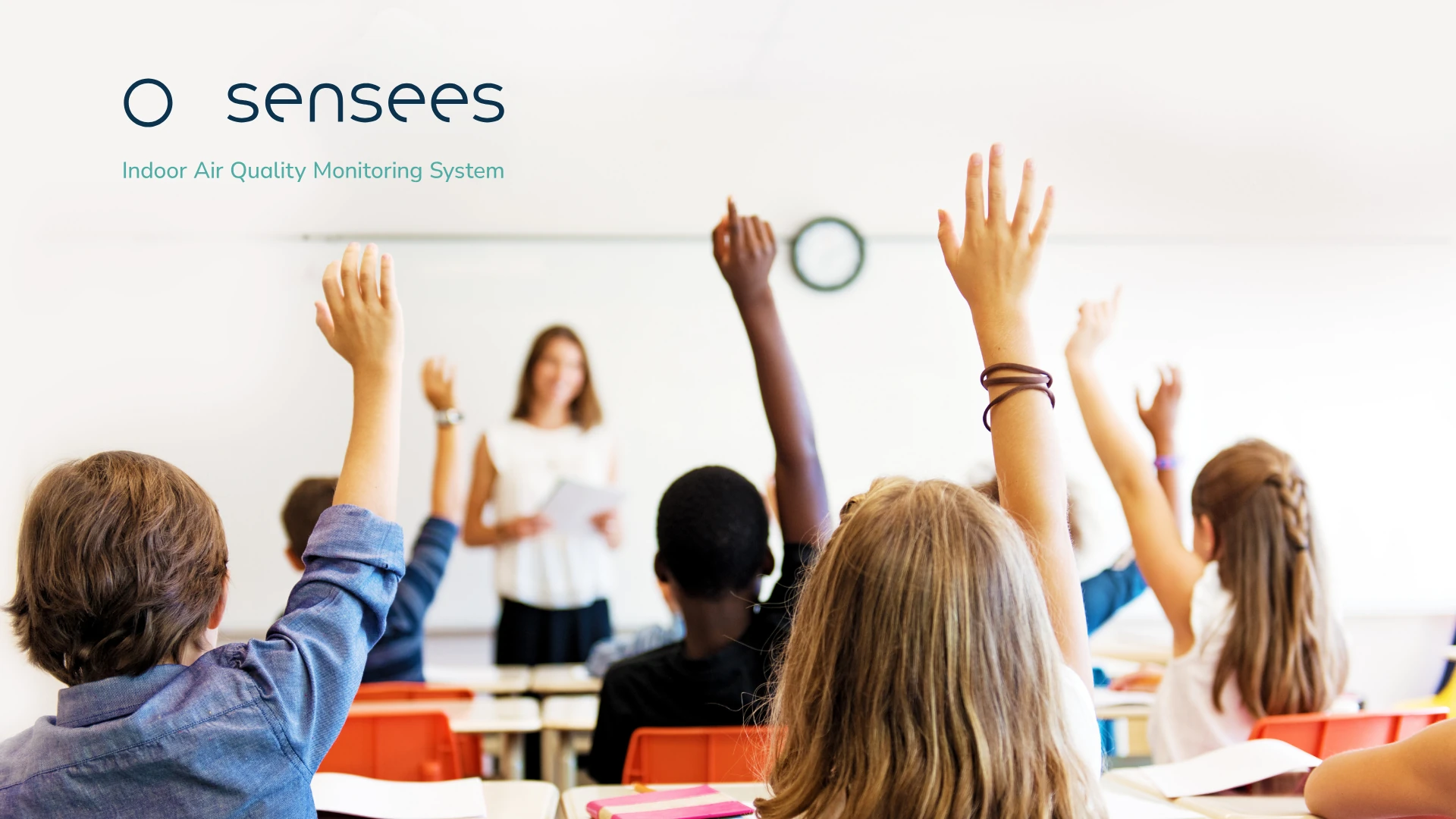Pregled
Udružili smo snage s Hrvatskom akademskom i istraživačkom mrežom (CARNET) kako bismo poboljšali kvalitetu zraka u više od 400 škola diljem Hrvatske. Korištenjem našeg inovativnog Sensees Indoor Air Quality Systema i Sensees Indoor senzora, omogućili smo tisućama učenika zdravije okruženje za učenje.
Izazov
Škole u Hrvatskoj, kao i mnoge druge širom svijeta, suočavale su se s izazovom održavanja optimalne kvalitete zraka u učionicama, ključne za zdravlje i akademski uspjeh učenika. Loša kvaliteta zraka može dovesti do povišenih razina CO₂, nelagode, smanjenja koncentracije i povećanog broja izostanaka zbog respiratornih problema.
CARNET, kao javna ustanova unutar Ministarstva znanosti i obrazovanja, tražio je inovativno rješenje za praćenje i upravljanje kvalitetom zraka u školama. U skladu sa svojom misijom tehnološkog unaprjeđenja obrazovanja, CARNET je trebao pouzdanog partnera s naprednim alatima i ekspertizom za ostvarenje ove vizije.
Suradnja
Za provedbu ovog ambicioznog projekta, CARNET je odabrao Smart Sense. Projekt je također bio u skladu s ciljevima programa e-Škole, koji potiče digitalnu zrelost i razvoj ICT infrastrukture u hrvatskim obrazovnim ustanovama.
Školama smo osigurali Sensees Indoor senzore kvalitete zraka, posebno dizajnirane za praćenje ključnih parametara okoliša poput razine CO₂, temperature i vlažnosti u stvarnom vremenu. Osim senzora, razvili smo AERO platformu – centralizirani sustav koji prikuplja i analizira podatke iz svih opremljenih škola, pružajući korisne uvide za poboljšanje unutarnjeg okruženja.
Cilj
Glavni cilj projekta bio je osigurati učenicima zdraviju i održiviju budućnost pružanjem uvida u kvalitetu zraka koji dišu. Korištenjem preciznih podataka, škole mogu poboljšati mikroklimu u učionicama, smanjiti potrošnju energije i pozitivno utjecati na dobrobit i akademski uspjeh učenika.
Tehnologija koja donosi promjene
Instalirani Sensees Indoor senzori kontinuirano prate kvalitetu zraka u školama i šalju podatke u AERO platformu. Ova centralizirana baza omogućuje učiteljima, ravnateljima i zdravstvenim službama jednostavan pristup detaljnim analizama i preporukama kroz intuitivno korisničko sučelje.
AERO platforma obrađuje sirove podatke i pretvara ih u korisne informacije. Primjerice, ako razina CO₂ u učionici poraste, sustav odmah šalje upozorenje učiteljima kako bi poboljšali ventilaciju, osiguravajući optimalne uvjete za učenje. Platforma također detektira trendove poput povećanja temperature u učionicama tijekom zime, omogućujući školama optimizaciju grijanja i uštedu energije.
Overview
We’ve partnered up with the Croatian Academic Research Network (CARNET), to embark on a transformative mission to improve indoor air quality in over 400 schools across Croatia. Leveraging our innovative Sensees Indoor Air Quality System and Sensees Indoor Sensors, we have helped bring healthier learning environments to thousands of students.
The Challenge
Schools across Croatia, like many others globally, faced a significant challenge: maintaining an optimal indoor environment conducive to learning while also safeguarding the health and well-being of students. Poor indoor air quality can result in elevated CO2 levels, discomfort, and even a decline in student performance and attendance. To address these concerns, CARNET, a public institution within the Ministry of Science and Education, sought an innovative solution to monitor and manage indoor air quality. With a mission to foster technological advancement in education, CARNET needed a trusted partner with the expertise and tools to make their vision a reality.
The Collaboration
CARNET chose us, Smart Sense, as the partner for this ambitious initiative, which aimed to equip Croatian schools with the necessary technology to continuously monitor and optimize indoor air quality. The project also aligned with CARNET’s broader efforts under the “e-Schools” initiative, which focuses on digital maturity and ICT infrastructure development in Croatian educational institutions.
We have provided Sensees Indoor Air Quality Sensors, specifically designed to track key environmental parameters such as CO2 levels, temperature, and humidity in real-time. To manage and interpret the data collected, we’ve also developed the AERO platform—a bespoke system that serves as a central hub for aggregating and analyzing the data from all equipped schools.
The Goal
The project’s goal was clear: to bring Croatian students closer to a sustainable, healthier, and smarter future by providing real-time insights into the air they breathe. The initiative inquired to empower schools with the data necessary to create healthier microclimates, reduce energy consumption, and ultimately improve the well-being and academic performance of students.
More About The Solution Behind The Change
Sensees Indoor sensors, installed in schools nationwide, continuously monitor indoor air quality, sending real-time data to the AERO platform. This centralized data system allows educators, school administrators, and health officials to access detailed, actionable insights through an easy-to-use interface.
The AERO platform is designed to transform raw data into meaningful insights, helping schools to take timely, informed actions. For instance, if CO2 levels in a classroom rise, educators receive immediate alerts to improve ventilation, helping to maintain optimal air quality and enhance student focus. The system also identifies trends such as elevated temperatures in classrooms during winter, enabling administrators to adjust heating systems and save energy.
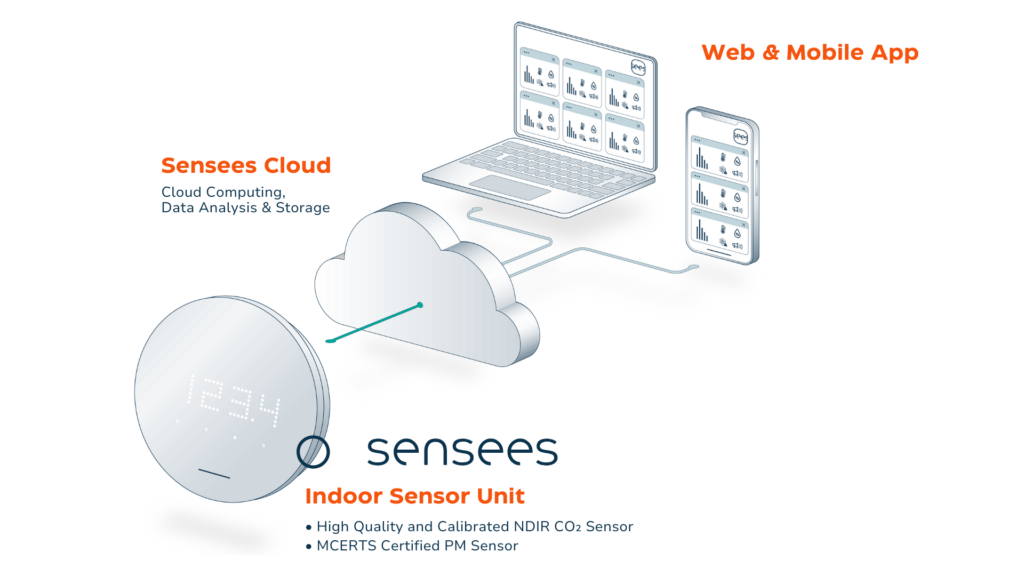
Rezultati: Zdraviji učenici i bolje školsko okruženje
Rezultati su bili iznimni. Prema povratnim informacijama nastavnika, koncentracija učenika se znatno poboljšala, a slučajevi pospanosti tijekom nastave su smanjeni. Također, škole koje su koristile Sensees sustav zabilježile su manji broj respiratornih oboljenja i izostanaka zbog gripe.
Praćenjem podataka, škole su uspjele prilagoditi grijanje i smanjiti operativne troškove, dok su razine CO₂ konzistentno ostale unutar preporučenih vrijednosti Svjetske zdravstvene organizacije, osiguravajući zdraviji zrak za učenike i nastavnike.
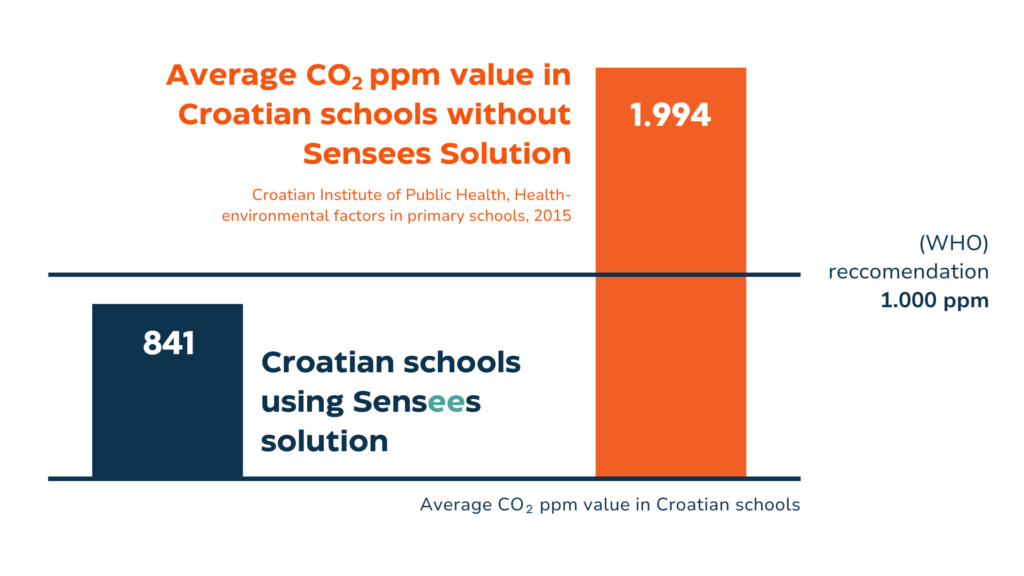
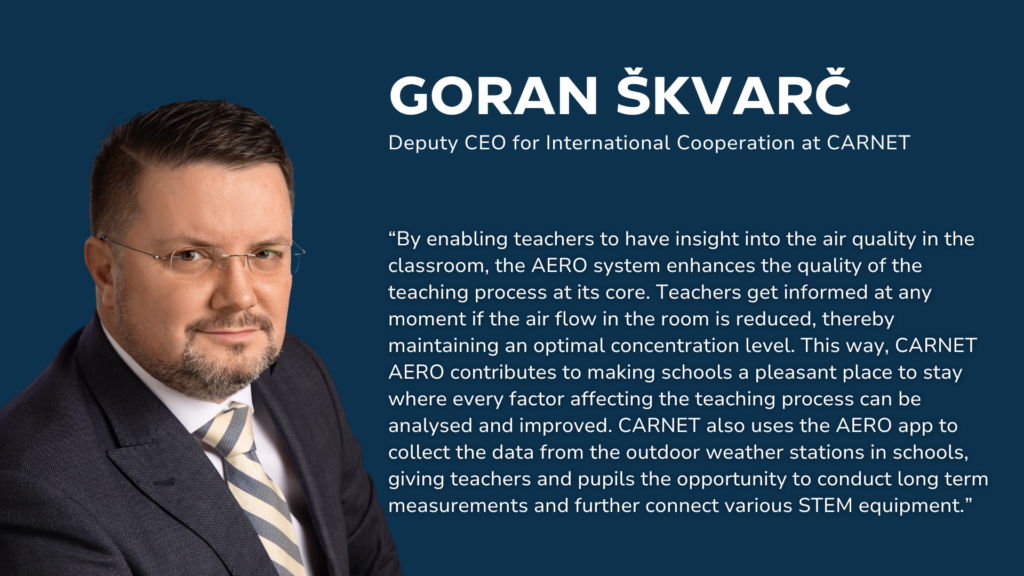
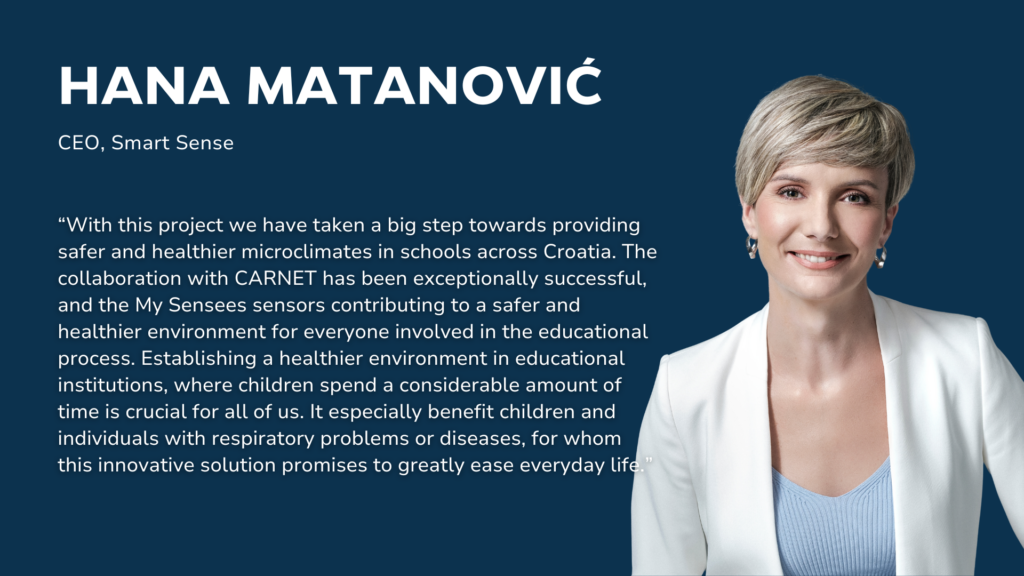
Suradnja između Smart Sensea i CARNET-a postavila je novi standard za integraciju tehnologije praćenja kvalitete zraka u obrazovni sustav. Korištenjem podataka u donošenju odluka, ovaj je projekt stvorio zdravija i učinkovitija školska okruženja za tisuće učenika.
Zahvaljujući inovacijama poput Sensees Indoor senzora i AERO platforme, Smart Sense nastavlja pomjerati granice mogućeg u obrazovanju, gradeći pametniju i zdraviju budućnost.

